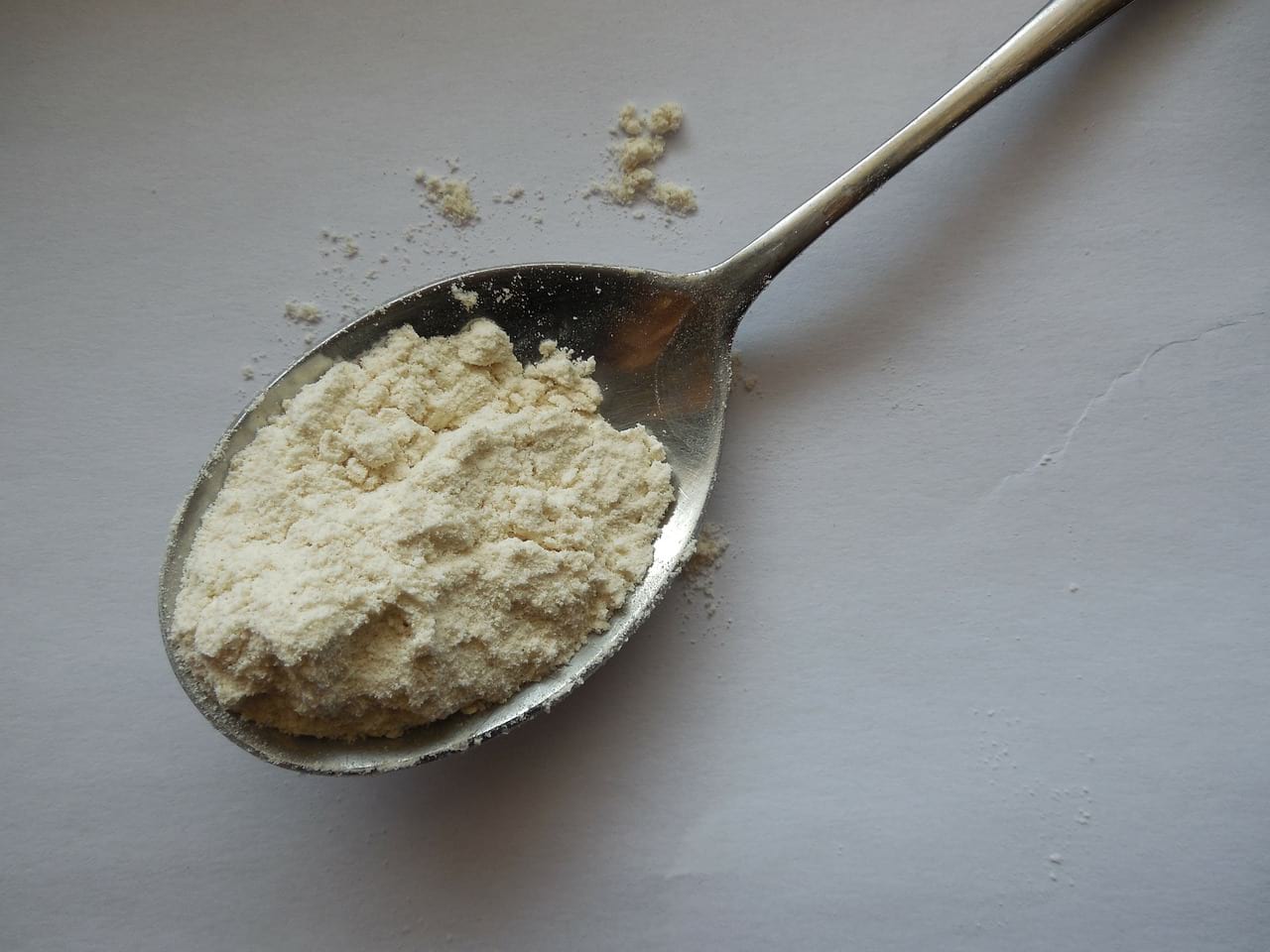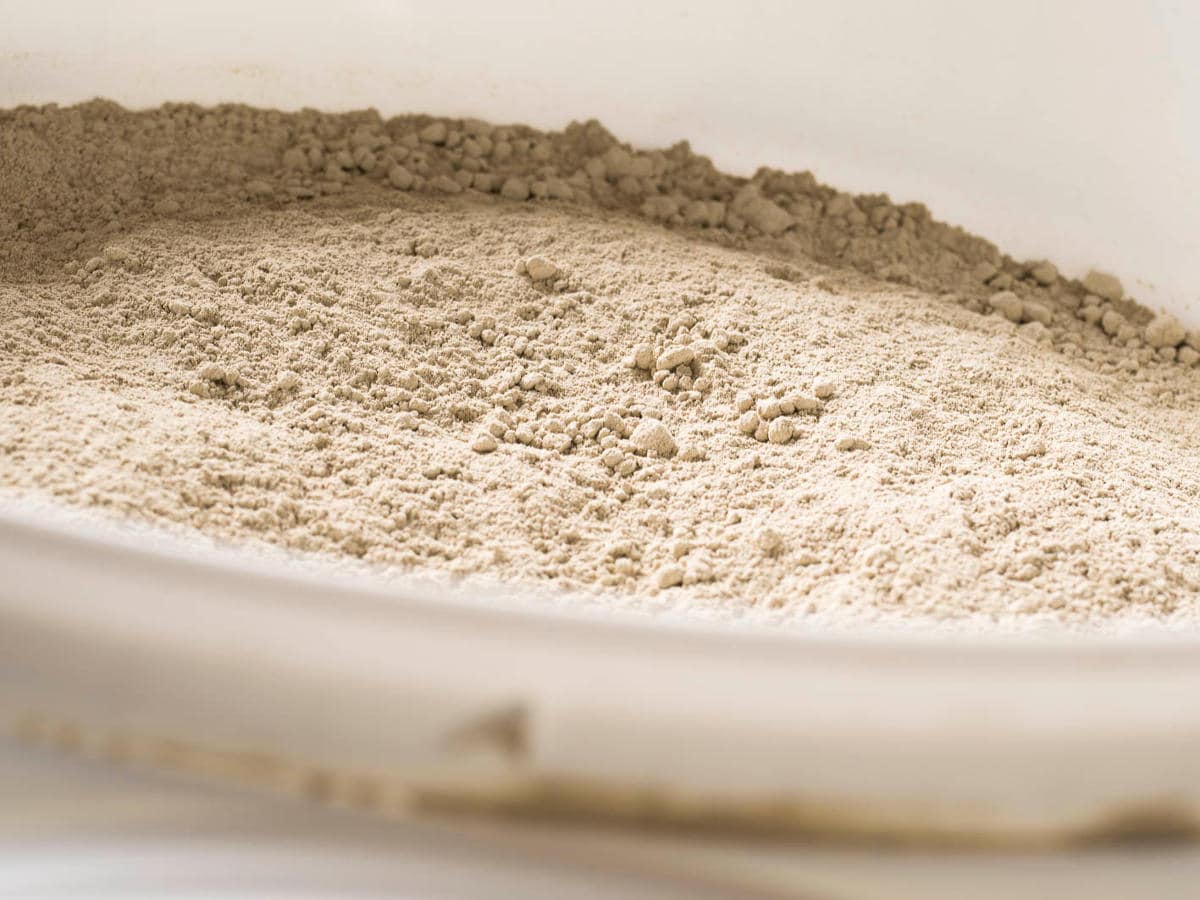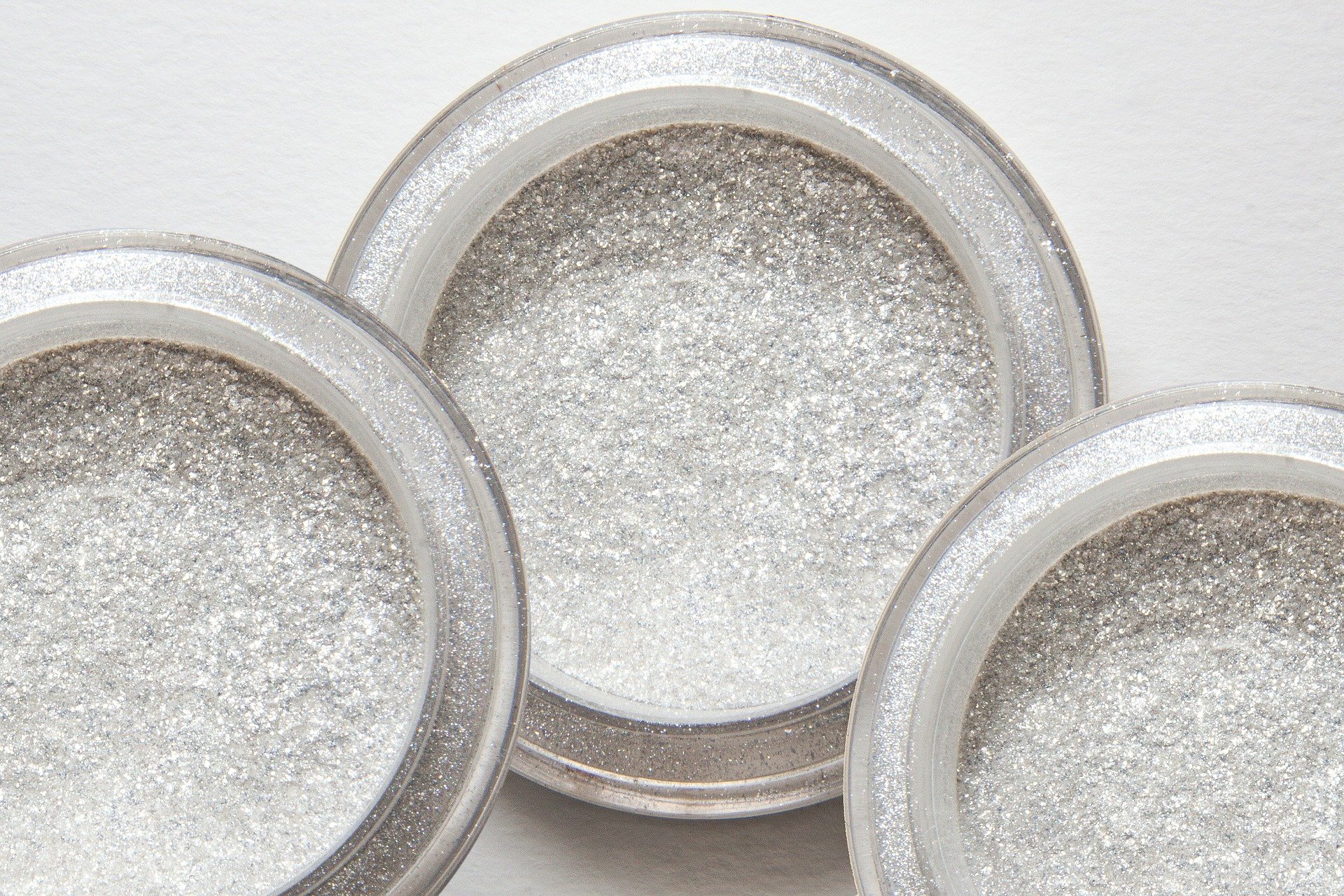Diatomaceous earth for dogs
Diatomaceous Earth is a natural product that acts as a powerful insecticide, ideal for owners looking to protect their dogs from fleas, lice and ticks without using chemicals.
However, natural does not mean harmless, and it is advisable to use this product with precautions and by paying particular attention to its composition to preserve the health of your dog. Moreover, all sorts of powers are attributed to Diatomaceous Earth which do not necessarily have any scientific value, so today I propose to untangle the truth from the false about this natural insecticide and its use against dog parasites.
What is Diatomaceous Earth for dogs?
Diatomaceous Earth, also known as Kieselguhr or Celite in the scientific sphere, is a variety of diatomite. This natural ingredient is not strictly speaking earth, contrary to what its name may suggest, but a fine powder of mineralized algae, a kind of fossil flour.
It is also commercially available under the name of Infusorial Earth, Silicon Dioxide, Tellurine or Diatomaceous Earth. Diatoms (or Bacillariophyta) are single-celled microalgae whose organism is surrounded by a siliceous exoskeleton, the frustule.
The silica present in the frustule of diatoms is amorphous, not crystallized, a detail that is important because crystallized silica can be dangerous for the health of humans and dogs, unlike amorphous silica. When diatoms gather and settle, they form diatomite, a light, porous and soft siliceous rock, related to the opal family.
Diatomaceous earth has filtering, insecticidal, abrasive, anti-caking and stabilizing properties. It is notably used to clarify wine, purify water and filter fine particles that can pass through sand and paper filters.
This ingredient is also used to stabilize explosives, especially nitroglycerin which tends to explode at the slightest shock: the mixture nitroglycerin-celite gave dynamite. In the food industry, Diatomaceous Earth is an additive that preserves the quality of the texture of certain dry foods (powdered sugar, flours, etc.) by preserving them from humidity.
Finally, and this is what interests us most here, Diatomaceous Earth is widely used as a natural pesticide and insecticide, especially in the organic food industry. The silica particles cause the death of insects by desiccation, a deep dehydration of their body.
Diatomaceous earth has the advantage of presenting no risk of environmental pollution, and is also not toxic to mammals when ingested.

Diatomaceous Earth for dogs: myths and realities
It should be noted that most studies on the insecticidal properties of Diatomaceous Earth are focused on its use in the food industry, more specifically in the fight against pests infesting grain storage facilities. On the other hand, the studies targeted on the action of Diatomaceous Earth on our friends the dogs are rare and little provided, and the allegations as for the effects of this product on fleas, lice and ticks result mainly from extrapolations resulting from its effectiveness - proven - in the agricultural sector.
At present, Diatomaceous Earth is mainly recommended to sanitize the environment of farm animals (chickens and cattle) and, to a lesser extent, to supplement their diet. Concerning dogs, there are only sketchy studies on the effectiveness of Diatomaceous Earth against parasites as well as on its harmlessness for our pets.
Therefore, it is important to distinguish between the known scientific facts about Diatomaceous Earth and theoretical assumptions based on extrapolation. The insecticidal properties of Diatomaceous Earth are proven on crawling insects, especially weevils, sylvans, grain beetles and triboliums.
It has also been shown that not all insects are equally sensitive to this natural biocide, and the case of dog parasites has not been the subject of specific large-scale scientific studies. Finally, studies conducted on Diatomaceous Earth for the control of agricultural pests have determined that the effectiveness of this product varies greatly depending on external factors surrounding its use (temperature and humidity, method of spraying, etc.).
In fact, while there is no reason to doubt the effectiveness of Diatomaceous Earth on dog fleas, ticks and lice, there is no scientific confirmation of its virtues in the fight against the parasites that plague our four-legged friends. It goes without saying that the debate surrounding Diatomaceous Earth also raises the question of the risks that may be associated with the use of this product on our pooches in the absence of veterinary studies on the subject.
Even if the silica contained in this product is amorphous, it can irritate the respiratory tract of the most sensitive dogs. It is also likely to cause more or less severe lesions when it comes into contact with the dog's mucous membranes (eye, mouth, nose, etc.) because of its dehydrating power.
Nevertheless, when used correctly, it seems that it presents few health dangers for our furry companions. Diatomaceous earth becomes inert as soon as it comes into contact with a liquid in greater quantity than it is capable of absorbing, so it is easy to neutralize.
If it is ingested, for example, it loses its abrasive power and therefore presents no risk to the dog's digestive system. It is not toxic, and even beneficial for the body thanks to the trace elements it contains.
In the end, the lack of studies on the subject does not allow us to provide indisputable proof of the anti-parasite virtues of Diatomaceous Earth on dogs, although it is tempting to extrapolate the results obtained in the agricultural sector. Some veterinarians recommend its use as a complement or replacement for chemical antiparasitics, while others advise against its use on the dog's skin.
As for the owners, there is a split between those who are very suspicious and those who swear by this natural insecticide. In my opinion, Diatomaceous Earth can be a good option to avoid chemical treatments, but its "natural" side should not make us forget its potential risks.
For all intents and purposes, I would like to remind you that "natural" is not synonymous with "harmless" or "healthy": there are a plethora of extremely dangerous substances in nature. The best example of this very common misconception is undoubtedly petroleum, a 100% natural product that no one wants to drink a large glass of, and rightly so!
Like essential oils or plant-based lotions, it is therefore advisable to use Diatomaceous Earth with all the necessary precautions to avoid harming your dog's health.

Diatomaceous Earth for dogs: precautions to take
The first thing to do is to make sure you use diatomaceous earth containing amorphous, food-grade silica. Calcined silica has been heated to crystallize and is more volatile and extremely harmful: it is designed to be used for filtration, not on humans and animals.
Note that amorphous diatomaceous earth generally contains about 1% crystallized silica, so it should be used with caution. Also, make sure that the diatomaceous earth has not been chemically treated, especially with soda, and that it has not undergone any heavy transformation.
For best results, avoid Diatomaceous Earth containing too much silica (more than 90%), as this product must also contain other trace elements, notably magnesium and calcium, to be effective. In fact, beware of brands that proudly sell you pure Silicon Dioxide or Diatomaceous Earth containing 100% silica: this is far from being a guarantee of effectiveness.
Finally, choose white Diatomaceous Earth (softer) over grey (more abrasive), while making sure that it has not been bleached with soda.
Using Diatomaceous Earth on your dog
You can treat your dog's environment by sprinkling Diatomaceous Earth on his basket, pillow, couch, bed, or even your floor to eliminate any fleas that may be present. Leave the powder on for 48 hours before vacuuming, and repeat every other day until the pests are completely gone from your environment.
You can also apply Diatomaceous Earth directly to your dog's skin, provided he has no skin lesions or a particularly sensitive, allergic or easily irritated dermis. If your dog already has a fragile skin or respiratory system, Diatomaceous Earth is not indicated for him.
The product must be applied on a dry skin and coat, because humidity makes it lose its effectiveness. When used correctly, on a healthy dog, Diatomaceous Earth can be applied every two days until the parasites are completely gone, then once a week as a preventive measure.
Be careful not to create clouds of silica when sprinkling the product on your dog's coat and avoid his head to avoid any risk of inhalation and contamination of the eyes and nose. A very practical tip is to put a wet cloth on your dog's head during the operation to avoid any risk of inhalation and contact with the eyes.
Once done, brush your dog so that the powder penetrates its fur and reaches its skin where the parasites live. In case of contact with your dog's eyes or nose, rinse thoroughly with water or saline solution. If irritation appears and persists for more than a few hours, consult a veterinarian.
If inhaled, watch for respiratory symptoms (coughing, sneezing, hoarse voice...), although amorphous silica is usually safe in a healthy dog for a single, small inhalation. Monitor your dog's skin to ensure that it tolerates Diatomaceous Earth: in case of irritation (redness, itching...), rinse it thoroughly with water and consult a veterinarian if the symptoms persist.
Finally, note that food grade amorphous Diatomaceous Earth is not toxic, and that your dog can lick himself without danger after application of the treatment. Theoretically, Diatomaceous Earth can also fight against internal parasites of the dog, which many owners seem to confirm.
You can therefore distribute it daily to your doggie at the same time as his usual meal, up to 2% of the quantity of food (2 g for 100 g of food, for example). Ideally, you should mix your dog's diatomaceous earth with a wet food, so that the powder is not volatile and the dog does not inhale it while eating.

FAQ
Is Diatomaceous Earth dangerous for dogs?
Some diatomaceous earth is dangerous for dogs (calcined and crystallized). To guarantee your dog's safety, you should choose an amorphous, food-grade diatomaceous earth. In addition, any product, even a natural one, can be dangerous if not used with care: Diatomaceous Earth is very volatile and should not be inhaled or come into contact with your dog's eyes.
What is Diatomaceous Earth used for?
Diatomaceous Earth appears to be an effective natural anti-parasite, although its anti-flea, anti-tick and anti-mite properties are, at present, still theoretical.
Can Diatomaceous Earth be used as a food supplement for dogs?
Yes, because Diatomaceous Earth contains trace elements that can be beneficial to your dog. However, it was not developed for this purpose and cannot compete with food supplements specifically designed for our dog friends. It is therefore not the most suitable product to supplement your dog's meals.
Is Diatomaceous Earth effective against dog fleas and ticks?
The effectiveness of Diatomaceous Earth against dog parasites is praised by many owners, but like many natural products, its effect on dog fleas and ticks has not been scientifically studied. However, its insecticidal virtues have been proven in other cases, and it is commonly used to fight pests in the agricultural sector (parasites of livestock and insects infesting grain storage).
What dosage should be used to worm your dog with Diatomaceous Earth?
Diatomaceous Earth can be used to fight against internal parasites in dogs at a rate of 2% of the quantity of food distributed in each ration (for example, 2g of Diatomaceous Earth for 100g of food).
How do I choose the right Diatomaceous Earth for my dog?
First of all, you should never use diatomaceous earth if your dog has respiratory or, to a lesser extent, skin problems. In all other cases, it must be amorphous (not calcined or crystallized) and of food quality.
For a question of effectiveness, I also advise you to choose a Diatomaceous Earth rich in calcium and magnesium, and not only - or almost - made up of silica. Despite the lack of scientific evidence concerning its effectiveness on dog parasites, Diatomaceous Earth is generally praised by the owners who use it.
If you wish to use it on your dog, I recommend that you seek the advice of a veterinarian to ensure that your pet's health condition is compatible with this product.


